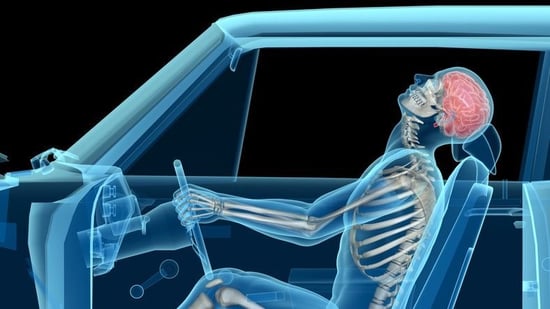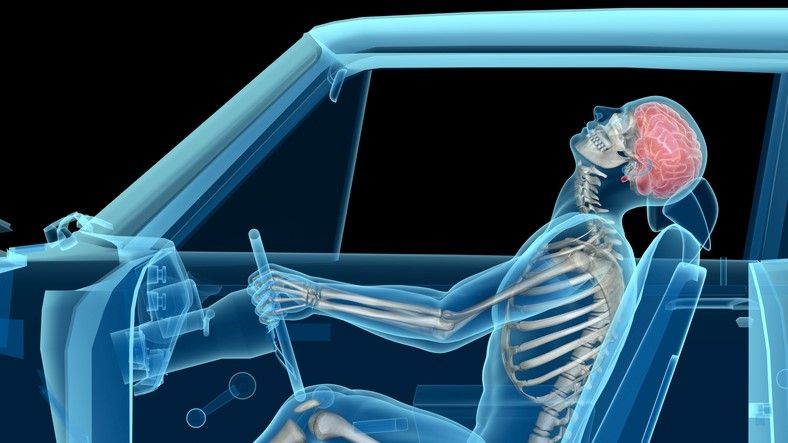8 Frequently Asked Questions About Whiplash Injuries
![Whiplash Doctor in Atlanta, GA Whiplash Doctor in Atlanta, GA]()
According to Georgia's Office of Highway Safety, there are over 385,221 car accidents each year.
Some of those accidents are minor and others more severe, but even low-velocity auto accidents can lead to Whiplash.
Despite its prevalence, whiplash still flies under the radar in terms of significant car accident injuries. Chances are, there may be a significant amount you don't currently know about whiplash.
That is why the doctors at Arrowhead Clinic in Atlanta have constructed this Whiplash FAQ page to help people gain a better understanding of what whiplash is, what are the symptoms, and how you can get it treated.
So, sit back and let Atlanta's Chiropractic Doctors of Arrowhead Clinic break down the 8 Most Commonly Asked Questions about Whiplash for you.
Just click on the question below to get an answer.
-
-
-
-
-
-
-
-
Question 1: What is whiplash?

Whiplash is a soft tissue injury that can affect muscles, ligaments, tendons, and other soft tissues.
When your neck is suddenly thrust forward and back, the whip-like motion can cause a tear in the muscles and soft tissue. It can also lead to cervical spine misalignments.
The forceful, rapid motion of your neck might not seem dire at the moment, as your attention is likely placed on the accident or scenario which caused the whiplash. However, it is a condition that cannot be overlooked.
- back to top
Question 2: What are common causes of whiplash?
The most common cause of whiplash is auto accidents. Specifically, when you are rear-ended.
Being involved in a rear-end auto accident will violently force your neck forward and back.
Other causes of whiplash can include any of the following:
- Sports Injuries
- Physical Abuse
- Assault
- Rollercoaster Crashes
- Other trauma
- back to top
Question 3: What are the symptoms of whiplash?
Symptoms of whiplash can include, but is not limited to, any of the following:
- Pain and/or stiffness when moving your head and neck from side to side
- Pain when rocking your head forward and back
- Overall tenderness
- Headaches at the bottom of the skull
- Upper back pain
- Reduced range of motion
- Tightness in the neck
- Shoulder and back pain
- Dizziness
- Ringing in the ears
- Insomnia
- Anxiety
- back to top
Question 4: What if whiplash is left untreated?
Whiplash may not present symptoms immediately. In fact, whiplash is known for displaying symptoms days or even weeks after the accident and initial trauma occurred.
The adrenaline rush can mask the effects of the injury, as well.
Soft tissue injuries can take a significant amount of time to heal. Therefore, the longer you delay treatment, the longer it will take to completely alleviate your whiplash symptoms.
If completely left untreated, whiplash is likely to lead to chronic pain.
- back to top

Question 5: How do you evaluate Whiplash?
Are you curious about how your doctor discovers which soft tissues or muscles have been injured due to whiplash?
Your Atlanta doctor will utilize an exam that assesses your spinal joint's mobility and pain response. These exams can include the following:
- Reflex testing
- X-rays
- Motor skill tests
- Cranial Nerve Examination
- Motion palpation and Compression testing
- back to top
Question 6: How can you treat whiplash?
Some treatment methods for whiplash include the following:
- Chiropractic Adjustments/Spinal Manipulation: Adjustments assist in realigning bones of the spine which helps restore your body's structural integrity.
- Electrical Stimulation and Muscle Relaxation: Electrical based stimulation improves muscle function and reduces pain. Muscle relaxation is achieved by putting gentle pressure on particular sensory trigger points.
- Exercises and Stretches: Therapeutic stretches and exercises improve your range of motion and muscle strength. Your doctor will teach you these activities so you can practice at home. This greatly increases your chances of a quick and optimal recovery.
- Proper Posture: You may be surprised how much good, proper posture plays in the alignment of your spine. Keeping your head, neck, upper and lower back aligned during movement and while resting significantly helps relieve stress on your neck.
- back to top
Question 7: Whiplash Home Pain Relief Methods
You shouldn't only do at-home methods for whiplash, but between appointments, there are some actions you can take to help temporarily alleviate whiplash pain.
These include:
- Icing your neck: This can reduce swelling and overall discomfort. Icing every 15 minutes for a few hours a day can be beneficial.
- Using a neck brace: A neck brace can provide support for your neck. However, neck braces are not considered long term options as they can weaken your neck muscles.
- Apply Heat: Use a warm, moist cloth to heat and soothe your neck. Only use heat after icingfor a day or two.
- back to top
Question 8: How Can I Prevent Whiplash?
Unfortunately, whiplash is often the result of an accident. Therefore, you cannot completely guarantee it will never occur.
However, there are safety precautions you can take. Make sure you are always wearing your seatbelt in your vehicle and that the headrest is at an appropriate height.
Another safety option is defensive driving. Of course, you have no control over other drivers on the road. Do not engage in road rage, stay within the speed limit, and do not tailgate other vehicles.
- back to top






.jpg)
 Car Accident Help
Car Accident Help Work- Related Injuries
Work- Related Injuries Truck Accident Medical Care
Truck Accident Medical Care